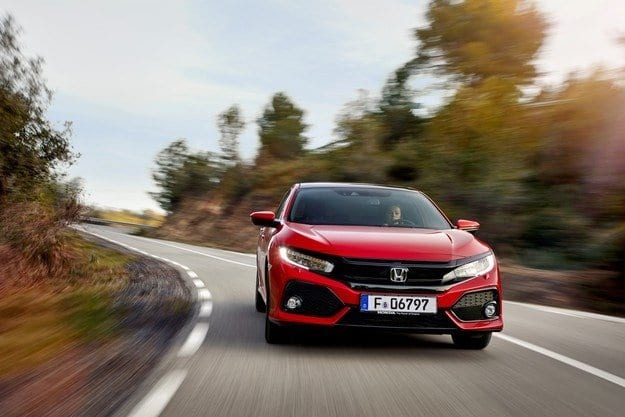
Test drive a Honda Civic with impressive safety

Honda System Sensors are now standard equipment on the model.
The new Civic was created to be a leader in safety. Honda's development team has created what is arguably the most reliable coupe in the compact class, coupled with the wide range of Honda Sensing active safety systems. The Euro NCAP model is expected to top the crash-test safety rating.
The extremely robust platform belongs to the next generation of the ACE structure (Advanced Compatibility Engineering), which includes structural elements that distribute energy even more evenly upon impact. Thus, the passengers of the cabin will be maximally protected, since it is distinguished by its front, front, side and rear impact resistance.
In the new generation, this design also includes crash crash technology, in which the front grille is designed to push the engine down and back in a collision. This effectively adds another 80 millimeters of damping zone, which absorbs the wave at the front of the car and thus reduces its penetration into the cabin.
Six airbags protect passengers, including intelligent side airbags as well as the i-SRS.
The tenth generation Civic's passive safety is complemented by a full arsenal of active systems integrated by Honda Sensing, which for the first time come standard on all levels. The entire system uses combined information from radar, camera, and high-tech sensors to warn and assist the driver in potentially dangerous situations.
Honda SENSING includes the following technologies:
Collision avoidance system: stops the vehicle if the system determines that a collision with an oncoming vehicle is imminent. It first beeps and then applies automatic braking force if necessary.
Forward collision warning: scans the road ahead and warns the driver of a potential collision. Audible and visual alarms to alert the driver of a potential impact hazard.
Carriageway exit signal: detects if the car is deviating from the current lane without a turn signal and signals the driver to correct his behavior.
Mitigating the consequences of driving off the road: Uses data from a camera built into the windshield to determine if the vehicle is pulling off the road. With the help of electric power steering, it makes small changes to the trajectory to return the car to the correct position, and in certain situations the system also applies braking force. If the driver takes control of the situation, the system is automatically disabled.
Lane Keeping Assist: helps the car to position itself in the middle of the lane along which it is moving, as the multi-function camera "reads" the road markings, and the system corrects the movement of the car.
Adaptive cruise control: thanks to him, the driver has the opportunity to adjust the electronics to the desired speed and distance from the vehicle in front.
Traffic Sign Recognition (TSR): detects and automatically recognizes road signs by displaying them on the information display.
Smart Speed Assistant: combines the automatic speed limiter set by the driver with information from the TSR, with its automatic adjustment in accordance with the requirements of road signs.
Intelligent Adaptive Autopilot (i-ACC): leading technology debuted with the 2015 Honda CR-V. It literally "predicts" and automatically reacts to changes in the movement of other vehicles on a multi-lane highway. It uses a camera and radar to predict and automatically react to the behavior of other vehicles in traffic. It was developed after extensive testing and study of European roads and driving skills. All this helps the new Civic to automatically adjust its speed even before other road users suddenly change their speed.
Other safety technologies in the new Civic:
Deadlock information: A special radar detects the presence of the car in the blind spot for the Civic driver and signals it with warning lights in the two side mirrors.
Cross Traffic Warning: When reversing, your Civic's side sensors detect vehicles approaching perpendicularly and the system beeps.
The wide-angle rear view camera provides excellent rearward visibility - conventional 130-degree, 180-degree, as well as top-down viewing angle.
Other standard systems include tire pressure monitoring and traction control.
